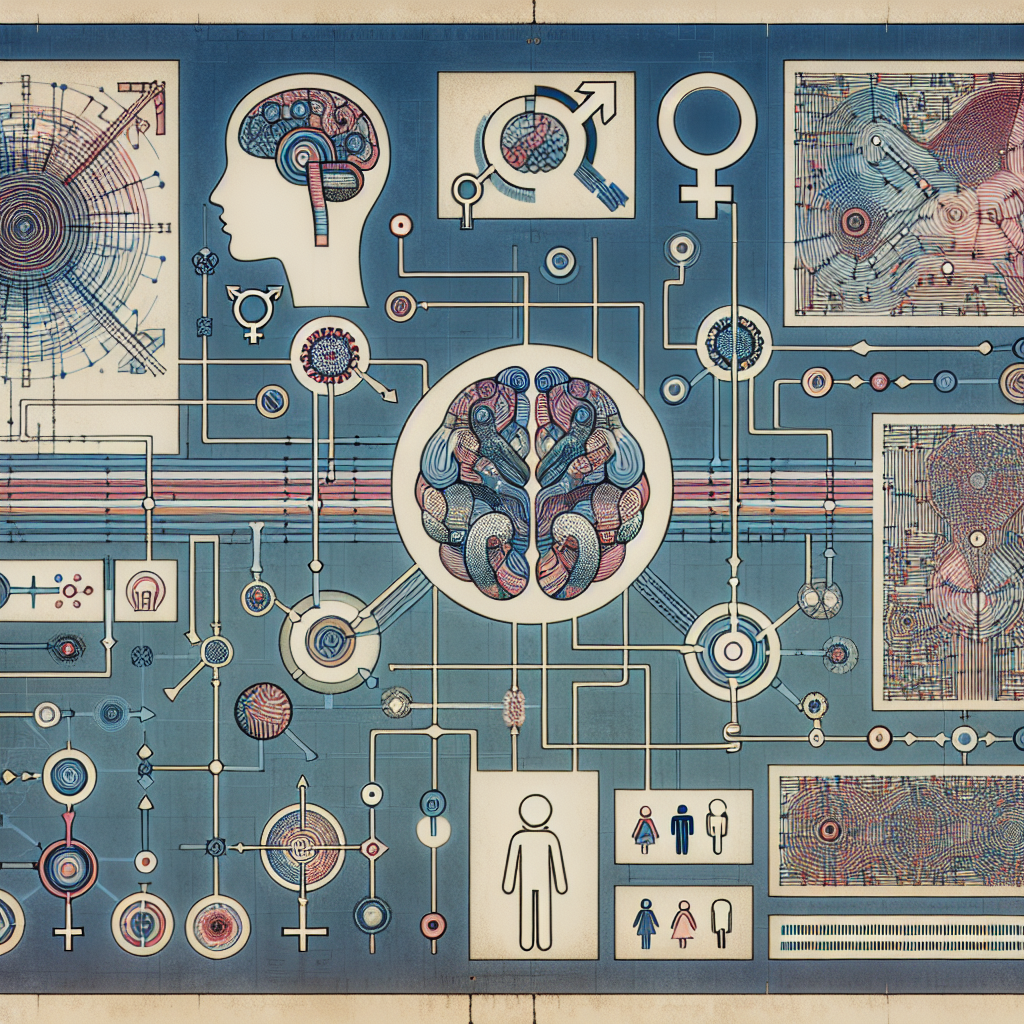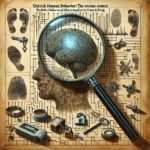
Introduction
In our rapidly changing world, understanding the factors that contribute to our identities has never been more essential. Among these factors, gender schema theory offers profound insights into how cognitive blueprints shape our identities from a young age. Simply put, cognitive blueprints refer to the mental frameworks we develop, while gender schema theory explains how children learn and internalize societal gender norms. This article delves into Cognitive Blueprints: The Impact of Gender Schema Theory on Identity Formation, revealing how these interrelated concepts mold our perceptions and experiences throughout life.
The Foundation of Gender Schema Theory
What is Gender Schema Theory?
Introduced by Sandra Bem in the 1980s, gender schema theory posits that individuals internalize cultural messages about gender from a young age. These messages create mental representations—or schemas—of what it means to be male or female within a given culture. Children begin to categorize themselves and others according to these schemas, which significantly influences their behavior, interests, and academic choices.
The Process of Internalization
The internalization process occurs through various channels, including family, media, peer interactions, and educational systems. For instance, children may observe their parents’ behaviors and internalize traditional gender roles, believing they should emulate these characteristics. Similarly, media portrayals can reinforce gender stereotypes, presenting limited views of what men and women can achieve.
The Role of Cognitive Blueprints
True to the term "cognitive blueprints," these schemas act almost like architectural plans for our psychological and social lives. They not only provide a framework for understanding gender roles but also influence how individuals navigate their environments.
The Three Stages of Development
- Creation: Beginning around age two, children form their initial schemas.
- Refinement: Between ages four to six, they refine these schemas based on experiences.
- Application: By ages seven to nine, children begin applying these schemas to their understanding of the world, influencing their educational paths and interests.
Case Study 1: The Impact of Toys on Gender Identity
A significant early influence on gender schema development is the world of toys. Research shows that children gravitate toward gender-typed toys, reinforcing societal stereotypes. For example, a 2018 study published in Psychology of Women Quarterly involved observing preschoolers in themed play areas, including "construction" and "kitchen" spaces. The study found that boys overwhelmingly chose toys associated with building and mechanics, while girls opted for dolls and kitchen sets.
Analysis
This case underscores the impact of cognitive blueprints on early identity formation. By consistently engaging with gender-typed toys, children develop specific interests and skills that align with societal expectations. This not only fosters a sense of gender identity but also limits the exploration of interests outside these parameters.
The Educational Environment: A Double-Edged Sword
Gender Bias in Educational Settings
Schools can serve as powerful environments for reinforcing gender schemas. For instance, classroom dynamics can often favor boys in subjects like mathematics and science, while girls may receive more encouragement in languages and humanities. A 2019 study published in the Journal of Educational Psychology revealed that teachers praised boys for their persistence in math, while girls were often praised for neatness or effort.
The Effect on Identity Formation
This bifurcation of encouragement not only shapes academic paths but also impacts self-esteem and self-perception. Girls, in environments where they’re less reinforced in math or science, may come to perceive these fields as "not for them," aligning with traditional gender schemas.
Case Study 2: Gender Performance in STEM Fields
Consider the case of a community college in Texas that implemented a "Girls Who Code" program. The initiative aimed to support girls’ engagement in technology. Participants reported an increase in interest and self-efficacy in STEM subjects following their involvement.
Analysis
This case illuminates the transformative power of interventions that challenge prevailing cognitive blueprints. By exposing girls to role models and hands-on experiences traditionally dominated by boys, educators can begin to shift restrictive schemas and broaden girls’ identities.
The Role of Media in Reinforcing Schemas
Representation Matters
Media representations play a critical role in shaping cognitive blueprints. Children often identify with characters that reflect their gender. For instance, media narratives that prominently feature women in positions of power can challenge stereotypes and inspire girls to envision themselves in similar roles.
Case Study 3: The Influence of Disney Princesses
Examining the evolution of Disney princesses offers insights into changing gender schemas. Early characters such as Cinderella and Snow White portrayed stereotypical gender roles focused on beauty and household skills. However, more contemporary princesses like Moana and Elsa exhibit independence, resilience, and leadership qualities.
Analysis
The changing narratives in children’s media demonstrate the potential for cognitive blueprints to evolve. These contemporary characters broaden possibilities for young audiences, instilling values of empowerment and ambition that transcend traditional gender expectations.
Intersectionality and Its Impact
Beyond Binary Gender
While gender schemas have historically focused on binary definitions of male and female, it’s crucial to acknowledge the role of intersectionality. Factors such as race, socioeconomic status, and sexual orientation complicate the cognitive blueprints affecting identity formation. Children from diverse backgrounds may experience additional layers of bias and expectation.
Addressing Underrepresentation
In exploring gender schema theory’s impact on identity formation, it’s essential to discuss the underrepresentation of non-binary and LGBTQ+ narratives. The 2020 Inclusive Education Review highlighted how schools that incorporated lessons on various gender identities fostered more inclusive environments, reducing stigma and broadening students’ understanding of gender.
Case Study 4: LGBTQ+ Inclusive Curricula
A school district in California adopted an LGBTQ+ inclusive curriculum, which featured stories and discussions about various gender identities. As a result, students reported greater acceptance and understanding of their peers, and many felt more comfortable expressing their identities.
Analysis
This shift illustrates the profound impact that cognitive blueprints can have when curricula challenge conventional gender norms. By normalizing diverse identities, educators foster a more inclusive atmosphere that respects and empowers all students.
The Implications for Parents and Caregivers
Encouraging Exploration
Parents often worry about the implications of gender schemas on their children. To combat limiting stereotypes, it’s vital to encourage exploration beyond traditional gender roles. For example, allowing children to choose their hobbies and wearing clothes they prefer can challenge preconceived notions.
Open Communication
Engaging children in open dialogues about gender roles and expectations can also dismantle harmful cognitive blueprints. Discussing characters from media or real-life figures who defy stereotypes can shift narratives and ultimately influence identity formation positively.
Case Study 5: Parental Role Models
A nationwide survey (2021) revealed that children whose parents actively discussed gender equality were more likely to pursue non-traditional careers. For instance, daughters of mothers in engineering careers reported feeling empowered to explore STEM fields themselves.
Analysis
This example highlights the critical role of parental influence in shaping identity formation. Engaging children in conversations about equality and representation can create an environment where diverse identities flourish.
Conclusion
Cognitive Blueprints: The Impact of Gender Schema Theory on Identity Formation reveals the intricate tapestry of influences that shape who we are. This knowledge empowers educators, parents, and society at large to create more inclusive spaces that pave the way for diverse identities. By understanding and challenging limiting narratives, we can equip future generations with the tools to craft identities that reflect authenticity rather than mere adherence to societal norms.
Key Takeaway
Awareness is the first step towards transformation. By actively questioning and reshaping our cognitive blueprints—through education, media representation, and supportive families—we can redefine what it means to exist in a gendered world.
FAQs
What is gender schema theory?
Gender schema theory posits that children internalize cultural messages about gender roles, shaping their identities through cognitive blueprints.How do cognitive blueprints affect identity?
Cognitive blueprints influence perceptions, interests, and behaviors, guiding how individuals navigate their social environments and self-identities.Can gender schemas be changed?
Yes, interventions like educational programs and inclusive media can effectively challenge traditional gender schemas and promote broader understandings of identity.What role does media play in gender identity formation?
Media representations significantly influence children’s perceptions of gender, shaping their ideas of roles, behaviors, and aspirations.- How can parents support their children’s gender identity exploration?
Parents can foster exploration by encouraging diverse interests, engaging in open discussions, and challenging limiting stereotypes within their own behaviors and narratives.
By weaving together these threads, this exploration of Cognitive Blueprints: The Impact of Gender Schema Theory on Identity Formation serves as not just an academic inquiry but a call to action. In encouraging understanding and dialogue, we open avenues for more enriching and authentic identities in our communities.















